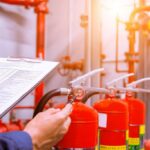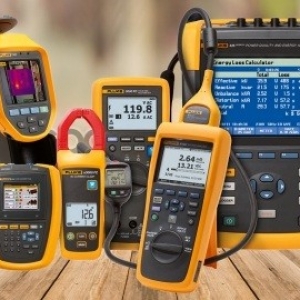Our environmental and safety auditing and assessment services are based upon hands-on, working knowledge of local regulatory requirements and enforcement standards, best practices, and internationally accepted standards, including major ISO certifications. We utilise industry-specific, vetted protocols customised to your operations, and our seasoned auditors have extensive experience with permitting, support, program and policy development, management, and auditing across a wide variety of industrial and lower-risk sectors.
Our auditing process offers mobile capabilities, management of findings, assignment of corrective actions, and deadline reminders to help busy clients manage their entire audit process.
We can work with you to proactively forecast risks to help ensure not only compliance, but complete risk assessment, management, and mitigation on into the future.
Auditing is the process of systematically reviewing and evaluating an organization’s activities, policies, operations, and financial or compliance records to ensure they are accurate, effective, and in adherence to relevant standards and regulations. The purpose of an audit is to provide an objective assessment of processes and identify areas of improvement to mitigate risks and enhance operational efficiency.
Objective evaluation of operations and processes.
Ensures compliance with laws, regulations, and industry standards.
Identifies gaps or inefficiencies in processes, ensuring corrective actions.
Improves transparency and accountability within organizations.
The main objectives of an audit are:
Ensure Compliance: Ensure that the organization is adhering to legal, regulatory, and internal policies.
Evaluate Operational Effectiveness: Assess whether resources are being used efficiently and whether processes are effective in achieving organizational goals.
Risk Mitigation: Identify potential risks, whether related to safety, compliance, or operational failure, and provide solutions.
Verify Accuracy: Validate that all processes and records are accurate and complete, such as calibration records for instruments, environmental compliance, or fire safety checks.
Continuous Improvement: Recommend improvements for long-term sustainability, cost savings, and risk reduction.
Auditing services are diverse, depending on the needs of the client and the sector. Below are some of the most common types:
A Fire Safety Audit evaluates a facility’s fire prevention, detection, and response systems to ensure compliance with local fire codes and international fire safety standards (such as NFPA, ISO 45001, etc.). This audit involves inspecting fire alarms, sprinklers, emergency exits, fire extinguishers, and other key safety features.
Fire Prevention Systems: Inspecting the adequacy of fire protection systems and materials.
Fire Drills and Training: Ensuring employees are properly trained in fire safety protocols.
Fire Detection and Alarm Systems: Evaluating smoke detectors, alarm systems, and their maintenance.
An Energy & Environment Audit assesses how efficiently an organization uses energy and resources and its environmental impact. The audit aims to reduce energy consumption, minimize waste, and ensure compliance with environmental regulations (e.g., ISO 14001).
Energy Consumption: Identifying inefficiencies in energy use, whether in HVAC, lighting, or manufacturing processes.
Carbon Footprint Assessment: Measuring and reducing emissions and waste.
Sustainable Practices: Evaluating the company’s adherence to sustainability and eco-friendly practices.
Calibration requirements vary by industry, as each has unique standards and operational needs. Here’s how industry-specific calibration auditing protocols work:
Manufacturing & Production: Regular calibration ensures machines maintain optimal performance, reducing product defects and downtime. Audits check machines for accuracy in measurements, tolerances, and safety features.
Surveying & Geospatial Services: Prism calibration ensures that surveying instruments provide accurate data for mapping, construction, and land development. Calibration audits validate that instruments like total stations, GPS devices, and laser equipment are correctly calibrated to avoid measurement errors.
Laboratories & Testing: In labs, precise calibration is vital for obtaining valid test results. Audits ensure that testing equipment (such as spectrometers or microscopes) adheres to the required accuracy and reliability standards.
Health & Safety: Calibration audits in health and safety industries help ensure that safety equipment such as gas detectors, pressure gauges, and thermometers function properly to prevent workplace hazards.
Prism calibration audits are critical for maintaining the precision and accuracy of measurement instruments.
Improved Accuracy and Precision:
Calibration audits ensure that instruments provide correct and reliable data, reducing errors and improving the accuracy of your work.
Regulatory Compliance:
Regular calibration audits help meet industry standards (ISO, ASTM) and legal regulations, ensuring compliance with international benchmarks.
Cost Savings:
Accurate equipment reduces the likelihood of costly mistakes, product recalls, or delays caused by faulty measurements or non-compliant results.
Enhanced Efficiency:
Ensures that your calibration processes are efficient, minimizing downtime, and increasing operational productivity.
Risk Mitigation:
Prevents equipment failures and operational risks caused by inaccurate instruments, such as errors in measurement that may lead to regulatory fines or safety hazards.
Our Prism Calibration Auditing Process ensures a thorough and reliable assessment of your calibration practices. Here’s how it works:
Initial Assessment:
Understanding your calibration needs, industry requirements, and specific instruments to audit.
Data Collection & Equipment Evaluation:
Collecting data on your current equipment and calibration practices to understand performance.
Compliance Check:
Comparing equipment against industry standards, legal requirements, and manufacturer specifications.
Report Generation:
A comprehensive report that details findings, discrepancies, and corrective actions.
Corrective Actions:
Identifying and implementing necessary adjustments, including re-calibration or training of staff.
Follow-Up:
Ensuring corrective measures are fully implemented and conducting follow-up audits as needed.
Risk forecasting in Prism Calibration Auditing involves identifying potential calibration issues before they affect your operations. Here’s how we handle it:
Early Identification of Calibration Trends:
Using historical data and analysis, we identify recurring calibration issues and mitigate them before they escalate.
Proactive Risk Management:
Suggesting preventive actions, such as recalibration schedules and maintenance, to avoid unexpected failures.
Long-Term Monitoring:
Developing a long-term plan for calibration and auditing to keep your equipment in top shape.
Continuous Improvement:
Providing recommendations for ongoing calibration practices that will prevent future issues and enhance operational efficiency.
Here are the key reasons why our Prism Calibration Auditing Services are the right choice for your business:
Experienced Auditors: Our team consists of seasoned professionals with extensive experience in calibration auditing across various industries.
Custom-Tailored Solutions: We provide audits that are customized to meet your specific calibration needs and industry requirements.
Advanced Tools & Technology: We use state-of-the-art equipment and software to ensure that every calibration audit is as accurate and efficient as possible.
Regulatory Compliance Expertise: We ensure your calibration practices meet all required standards, including ISO 17025, and other relevant industry-specific regulations.
Comprehensive Audit Reports: Our reports are clear, actionable, and include recommendations for corrective actions, helping you stay compliant and efficient.
The frequency of audits depends on the type of equipment and its usage. Typically, an annual audit is recommended, though more frequent checks may be necessary for high-precision instruments or heavily used equipment.
Inaccurate calibration can lead to measurement errors, which can cause project delays, increased costs, non-compliance with regulations, and safety risks.
Our auditing service includes a comprehensive evaluation of your calibration equipment, comparison with industry standards, identification of any discrepancies, and recommendations for corrective actions.
We provide expert audits, tailored to your specific needs, using the latest technology to ensure accuracy and compliance. Our reports are actionable and focused on long-term risk mitigation and efficiency improvement.






